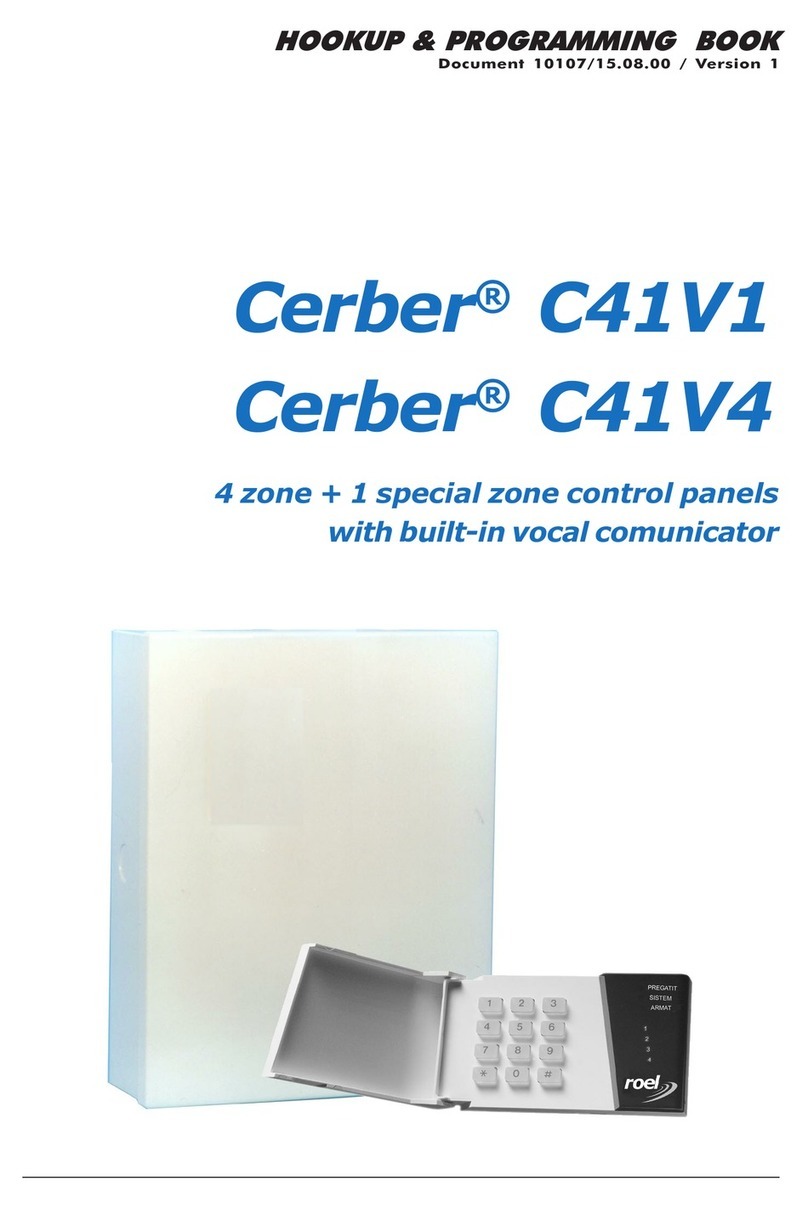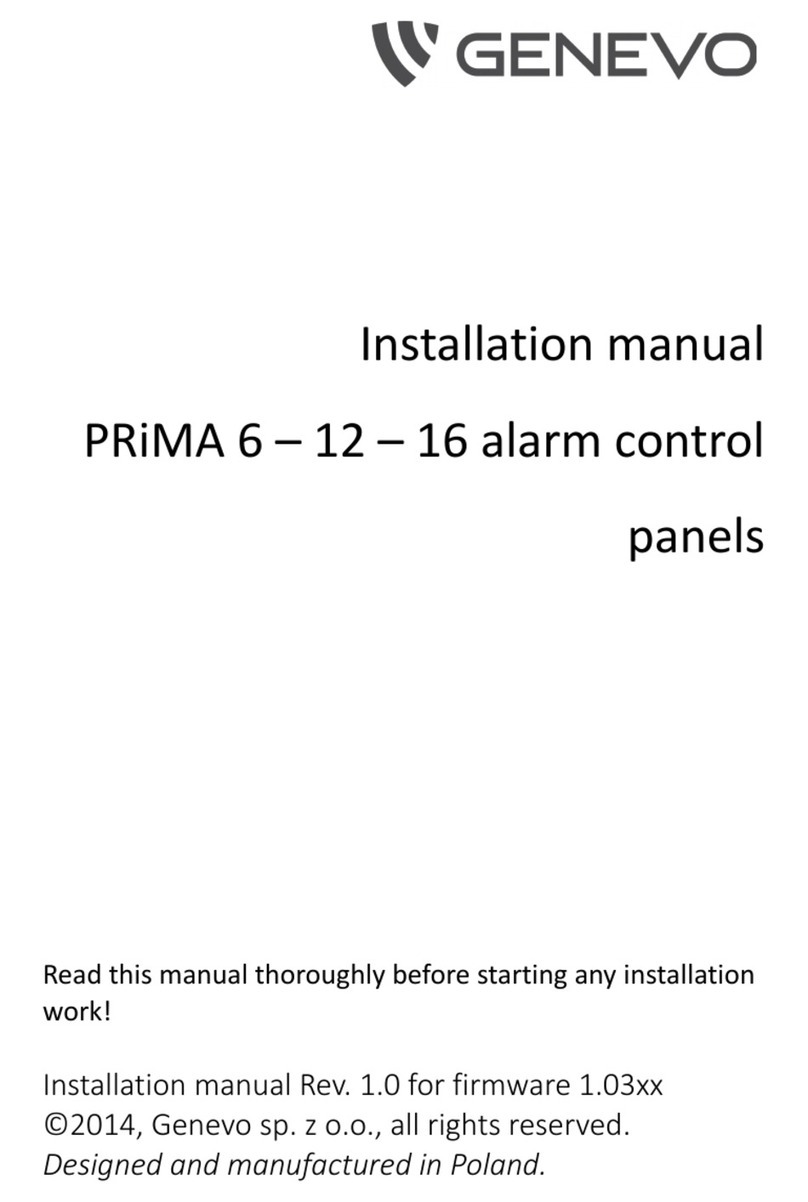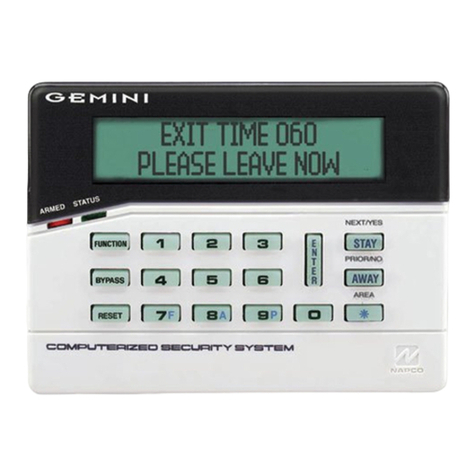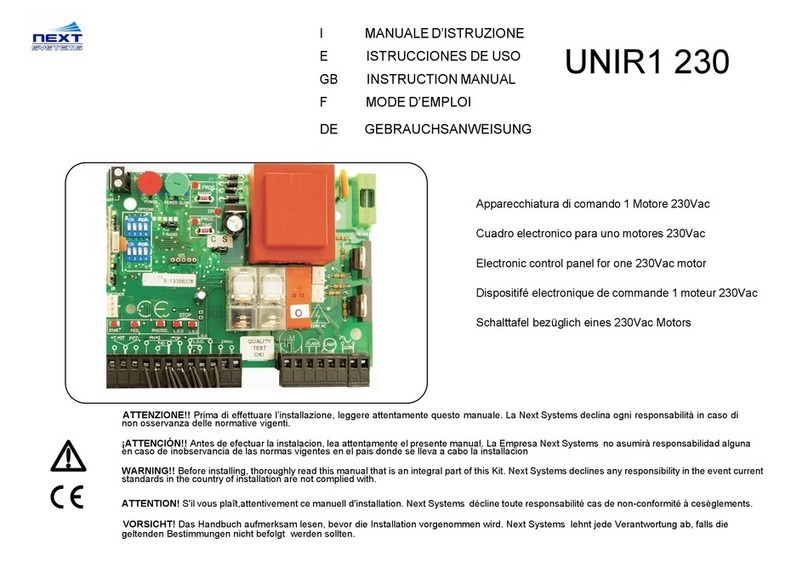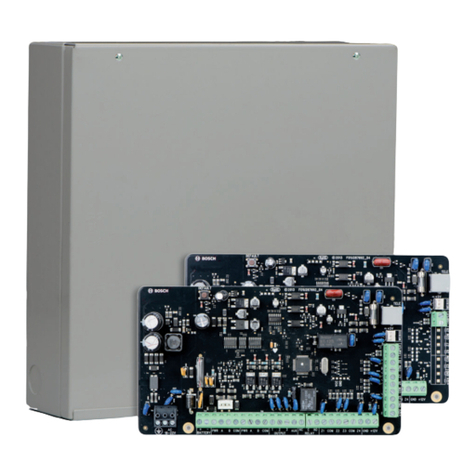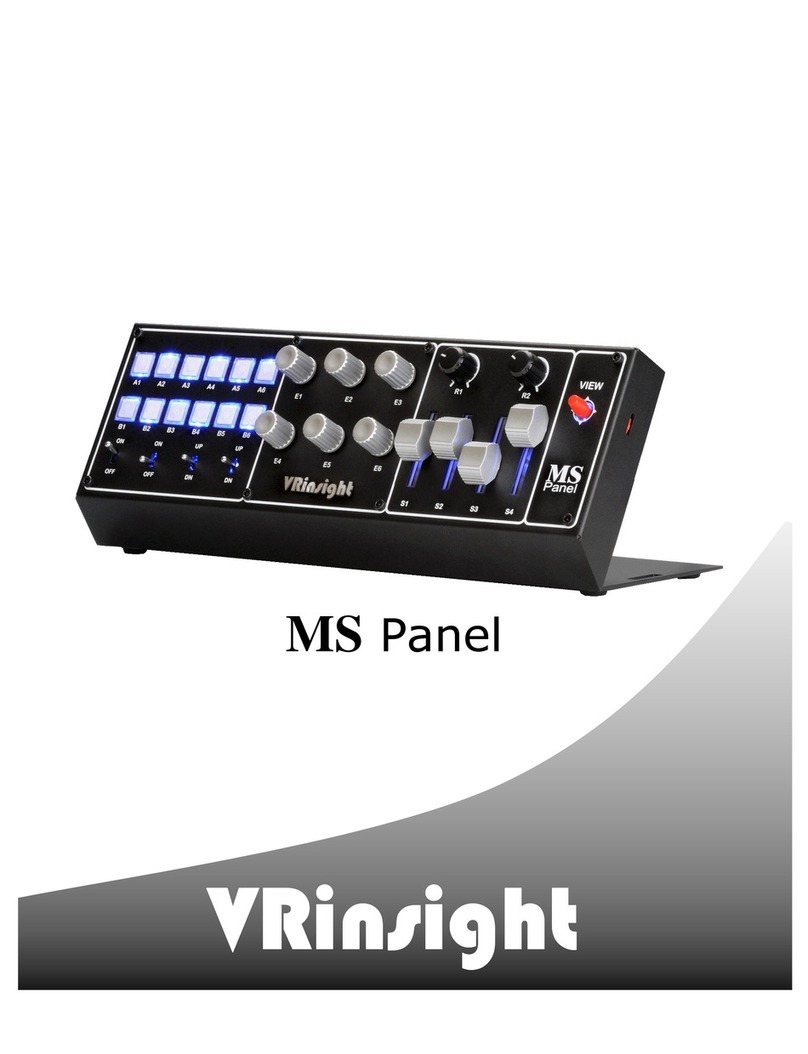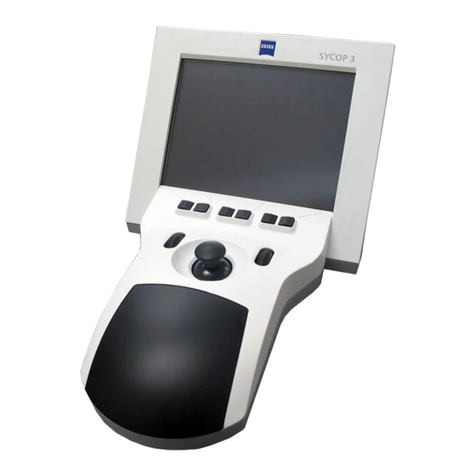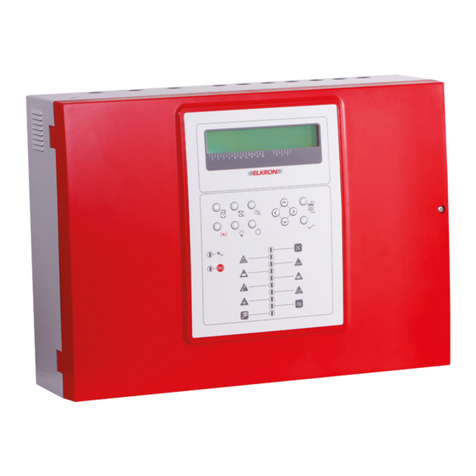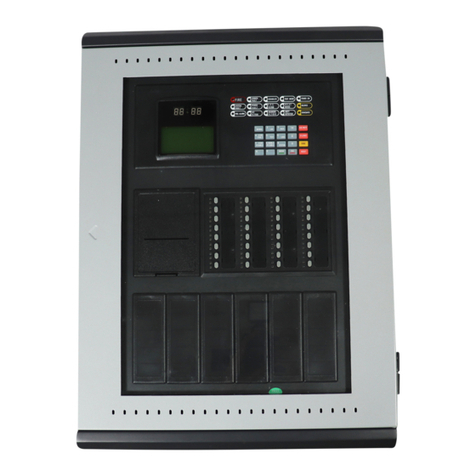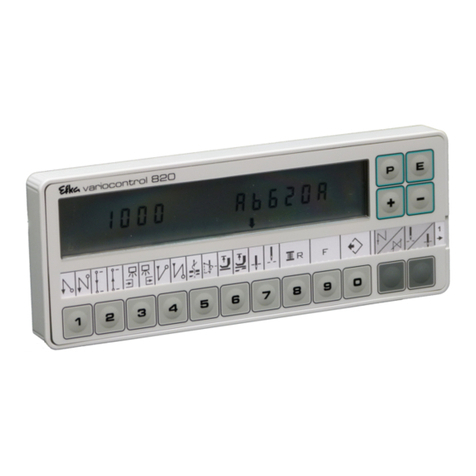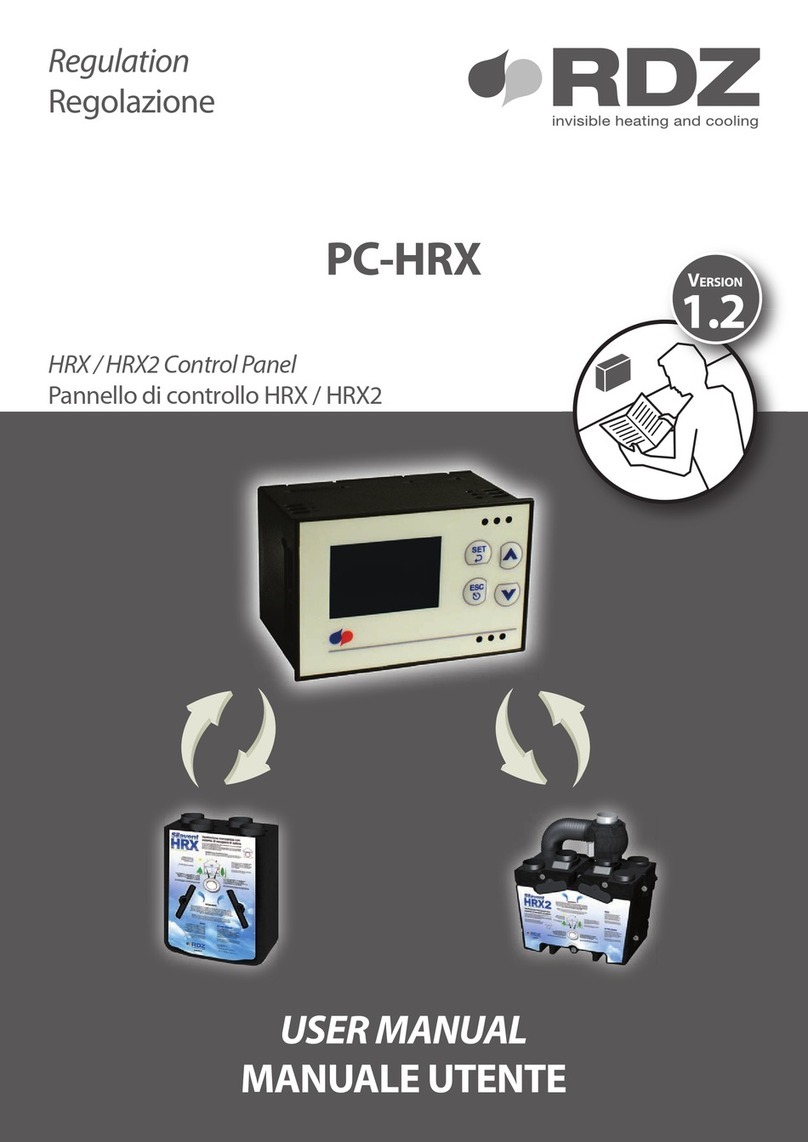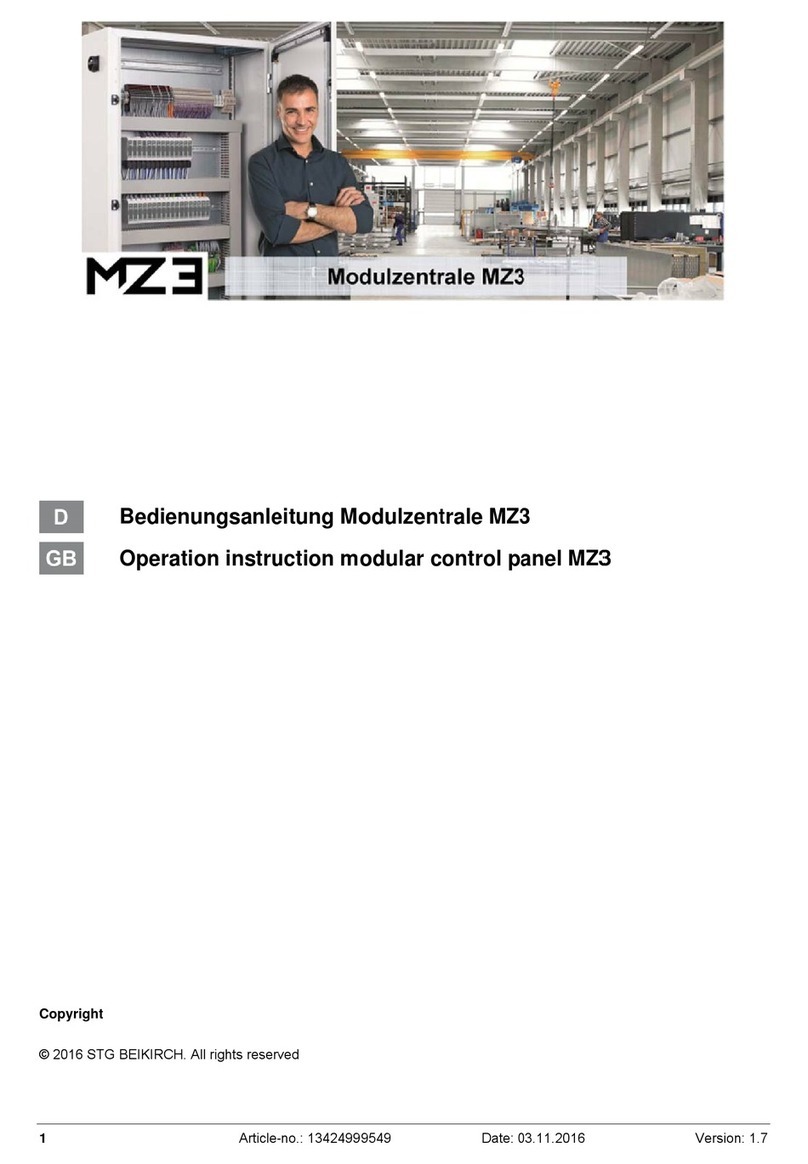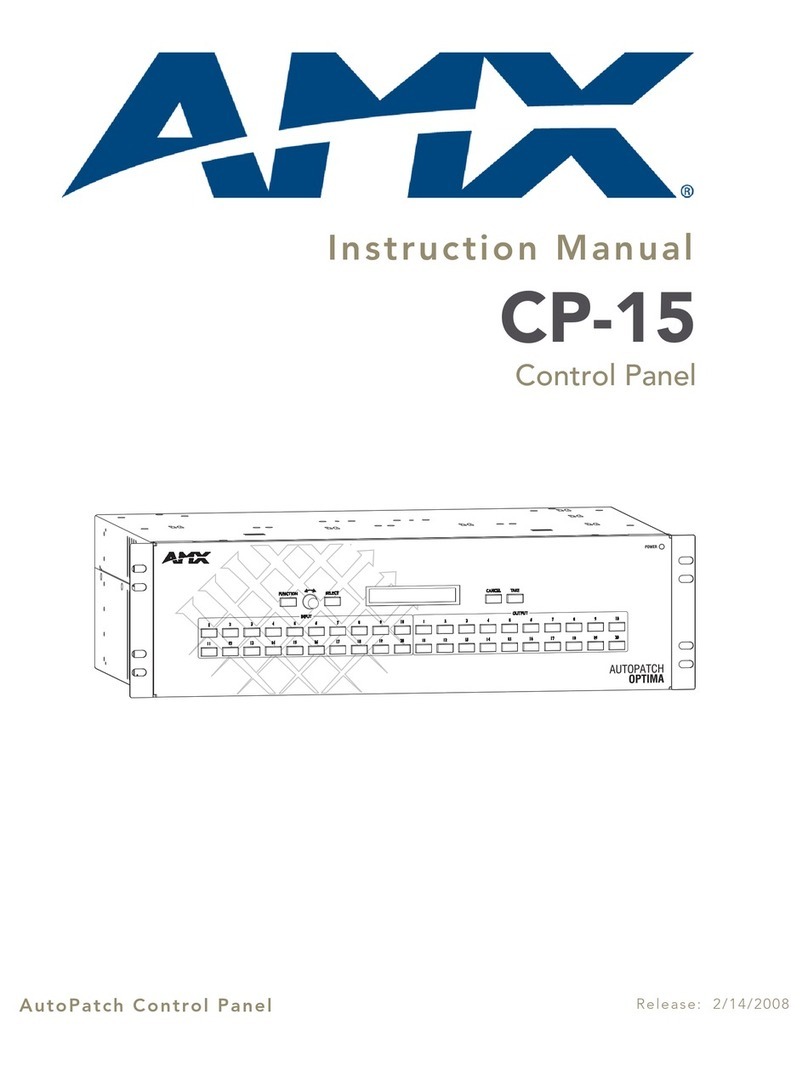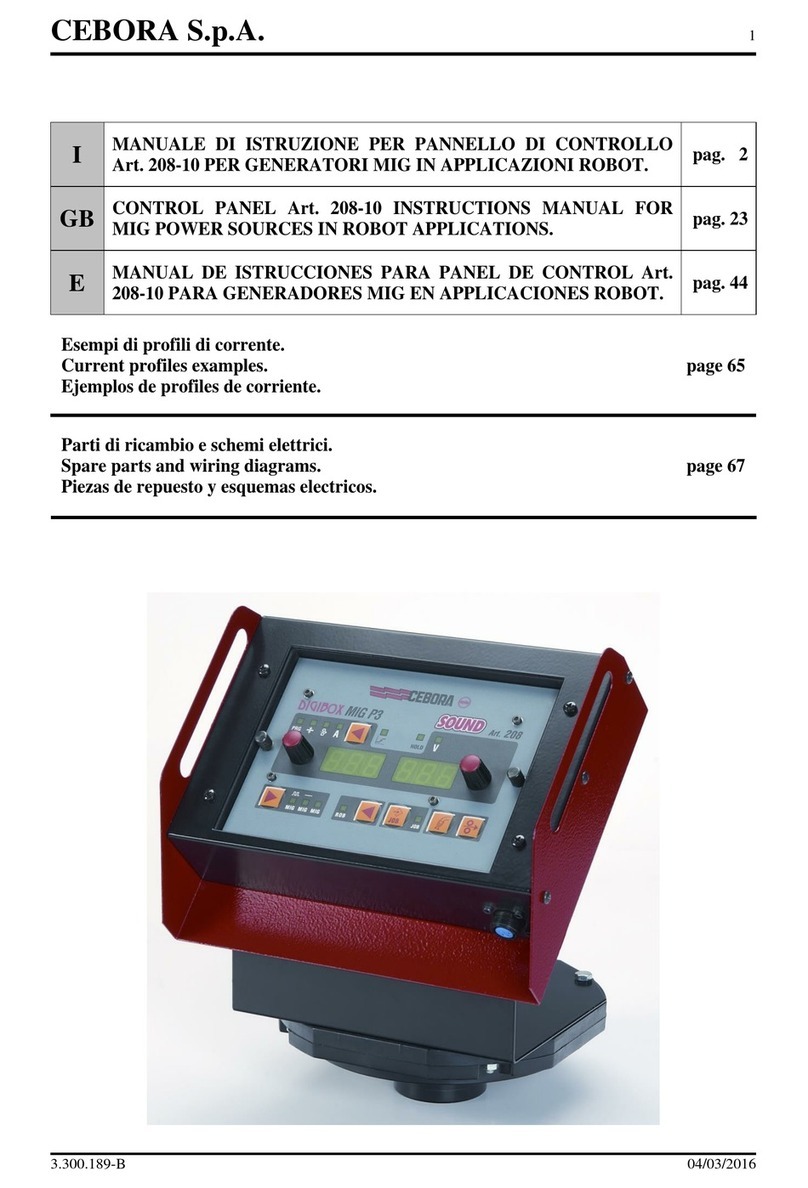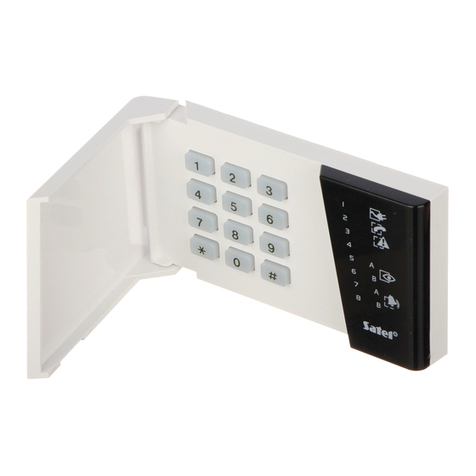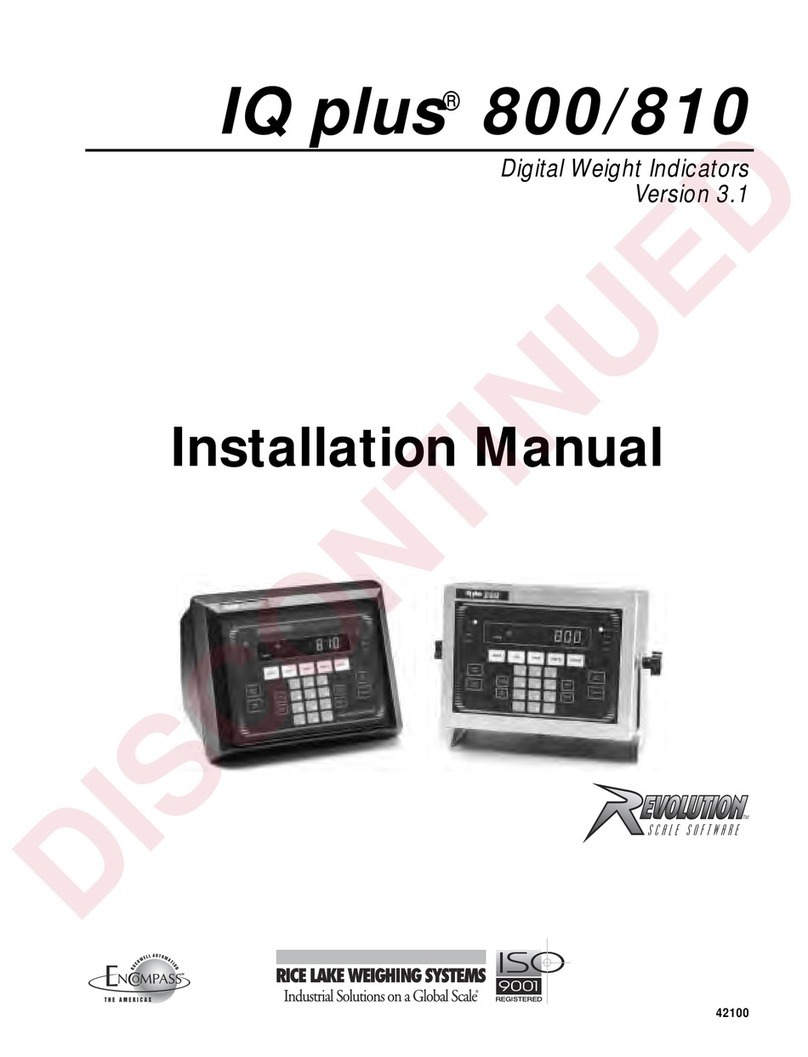ROEL Cerber C62 Owner's manual

Cerber C62
6-Zone and 2-Partition Burglary Control Panel
For your home and office
Hook-Up &Programming Book
Doc 10401/ 08.08.2005/ version 1.9

2
1. INTRODUCTION .....................................................................................................................................................................3
General Features ......................................................................................................................................................................3
User Codes ..............................................................................................................................................................................3
Installer Codes .........................................................................................................................................................................3
Digital Communicator................................................................................................................................................................4
Upload/Download......................................................................................................................................................................4
Zones......................................................................................................................................................................................5
PGM functions ..........................................................................................................................................................................5
Monitoring of system troubles ....................................................................................................................................................5
Voice messages (synthesis sounds) Communicator .......................................................................................................................5
Miscellaneous...........................................................................................................................................................................6
Technical Specifications:............................................................................................................................................................6
2. KEYPADS ...............................................................................................................................................................................7
Keypad types ...........................................................................................................................................................................7
Keypad layout ..........................................................................................................................................................................7
Functional Keys ........................................................................................................................................................................9
3. INSTALLING AND COMMISSIONING ....................................................................................................................................10
Mounting the control panel.......................................................................................................................................................10
Mounting the Keypad ..............................................................................................................................................................10
Wiring ...................................................................................................................................................................................10
Connectors ............................................................................................................................................................................11
Commissioning.......................................................................................................................................................................12
4. OPERATION .........................................................................................................................................................................12
System codes.........................................................................................................................................................................12
User Codes ............................................................................................................................................................................12
Installer’s Codes.....................................................................................................................................................................13
Partitioning ............................................................................................................................................................................13
Regular / Away Arming............................................................................................................................................................14
Other Arming Modes ...............................................................................................................................................................15
Timed Autoarming ..................................................................................................................................................................15
Inactivity Autoarming..............................................................................................................................................................15
“Instant Stay” Arming .............................................................................................................................................................15
“Stay Arming” ........................................................................................................................................................................16
Switch To Stay Arming ............................................................................................................................................................17
Keyswitch or Pushbutton Arming/Disarming ...............................................................................................................................18
Quick Arming Modes (Arming without user codes).......................................................................................................................18
“Away Quick Arming” ..............................................................................................................................................................18
“Quick Instant Stay Arming”.....................................................................................................................................................18
“Quick Stay Arming” ...............................................................................................................................................................18
Disarming & Deactivating an Alarm...........................................................................................................................................18
Zone bypassing ......................................................................................................................................................................19
System Trouble Status Displaying: [*][4] comand......................................................................................................................20
Alarm Memory Displaying: [*][5]..............................................................................................................................................21
A different display method for the alarm memory (available only for KP-064EP keypads).................................................................22
Chime Feature activating/deactivating.......................................................................................................................................22
Activation (Deactivation) of PGM Outputs / Starting (Finishing) the Rounds....................................................................................23
5. Master User’s Programming Menus .....................................................................................................................................24
Programming / Selective Erasure (except the “master code”) of 01 to 45 User Codes......................................................................25
Simultaneous Erasure of all users' codes (except the “master code”).............................................................................................28
Programming / Selective Erasure of the 1 to 4 follow me Phone Numbers......................................................................................28
Selective Erasure of the follow me phone numbers......................................................................................................................29
Simultaneous Erasure of all Follow me Phone Numbers................................................................................................................29
Programming session of the system time and date......................................................................................................................30
“Ambush Digit Programming” (“master user’s submenu” [61]) .....................................................................................................31
Other Operation Commands Performed by the master user..........................................................................................................31
PC download acceptance..........................................................................................................................................................32
Voice / Sound Reporting and Communication with PC Cancellation................................................................................................32
Keypad Special alarms ............................................................................................................................................................33
6. Programming of the System Parameters (“main programming menu”) ..............................................................................33
Programming Sections.............................................................................................................................................................35
Warning Limitations of Alarm Systems.......................................................................................................................................80

3
1. INTRODUCTION
GENERAL FEATURES
• Central unit's core of powerful RISC microprocessor;
• The electrical features include an EEPROM memory for the programmed configuration,
system/partitions status and LOG buffer to be retained even after a total power loss;
• User-friendly programming of the system parameters, from keypad or by PC (using “EZcom
C62 Software”);
• Up to 400 events with time and date stamp can be stored in a FIFO LOG buffer;
• “False alarm prevention” features: intellizones, automatic zone shutdown, beeps on entry and
exit delays;
• Features of “sensor under test” for easy detection of the sensors which produce false alarm.
• High-speed pre-programmed or programmable Communication Formats;
• 45 user codes (1-st being “master code”) and 2 installer’s codes (programming and maintenance
codes);
• Keypad displayed alarm memory for the first 9 alarms occurred in the system since last
arming;
• Up to 4 keypads which can be simultaneously 4-wire coupled to one central unit;
• Keypad protection using micro-switch tamper;
• Individual zone LEDs from 1 to 6, indicating the alarm and faulted status;
• Each zone accepts tamper recognition by zone attribute programming and 2EOL wiring
• System status LEDs: READY, SYSTEM, ARMED A and ARMED B;
USER CODES
45 programmable “user codes” (1-st being “master code”) with 11 programmable rights:
• Zone bypassing;
• Regularly arming;
• Stay arming;
• Force arming;
• Disarming/siren stopping;
• PGM1 activating/deactivating;
• PGM2 activating/deactivating;
• Access to partition A;
• Access to partition B;
• Starting the rounds;
• Finishing the rounds;
• All users have “ambush capability” (by pressing the key which corresponds to the “ambush
digit”, before the 4 or 6 digits of any user code, then the control panel will transmit a special code to
the central station).
INSTALLER CODES
• 2 programmable installer’s codes: installer’s programming code and installer’s
maintenance code (the first installer’s code is only for system parameter programming and the
second one with same 11 programmable rights and “ambush capability” as the 45 user codes, except
the Disarming right which is allowed only if the system/partition was previously armed by the same
code);

4
DIGITAL COMMUNICATOR
• Phone line tone detection upon the automatic initiating the reporting to the central station;
• 2 separate accounts and individual communicator formats to identify each partition upon
transmission to “central station”;
• 2 individual programmable phone numbers for transmission to CS1 and to CS2;
• Alternate or Split (double) reporting to CS1 and to CS2;
• 1 FIFO buffer which storages up to 80 events for transmission to CS, without erasing the
old events in case of “CS1 and CS2 communication failed” event, if alternate reporting is selected;
• 2 FIFO buffers which storage up to 80 events each, for transmission to CS1 and to CS2,
without erasing the old events in case of “CS1 communication failed” event and/or “CS2
communication failed” event, if split (or double) reporting is selected;
• Adaptive algorithm to function with central stations which generate handshake
frequencies in any order and kiss-off time from 0.6 to 3 seconds;
• Many communicator formats - DTMF Ademco Contact ID and several 4x2 formats (10PPS,
20PPS, 40PPS and DTMF Ademco Express);
• Programmable data and handshake frequency and transmission speed in 4x2 format:
Ademco Express, 10PPS, 20PPS or 40PPS with parity/no parity, data of 1800 (or 1900) Hz and
handshake of 1400 (or 2300) Hz;
• Periodical test reporting (with steps of up to 255 minutes or hours, time adjustment of the
starting and either unconditionally reporting or only while armed status);
• Programmable reporting codes for “zone alarming”, “zone restore” and “zone bypassing”
(automatic “from swinger” or by the panel - during home arming periods, if the zones have the
attribute “stay” - and manually by the users);
• Programmable zone restore (the “zone restore event” is recorded either in real time for each
violated zone,when the violated zone “closed back”, or upon bell cut-off,for all zones that previously
triggered the alarm);
• Programmable reporting codes for Arming/Disarming/Ambush events, according to the user
code;
• Programmable reporting codes for system trouble situations: “Low battery voltage”, “Restore
battery voltage”, “AC power loss”, “AC power Restore”, “Bell Trouble”(upon disconnection or overload
on the siren), “Bell trouble Restore” (Restore of disconnection or overload on the siren), “AUX
overload”, “AUX overload Restore”, “System time and date Loss”, “System time and date
Reprogrammed”, “Keypad lockout”;
• Cancellation of reporting to CS may be performed only by installer.
UPLOAD/DOWNLOAD
• Several upload/download operations:
-Uploading the system parameters from control panel onto PC (actually, onto “EZcom
C62 Software”);
-Downloading the programming of system parameters from PC (actually, from “EZcom
C62 Software”) onto the control panel (PC programming using “EZcom C62 Software”);
-Uploading the event LOG from the control panel into the “EZcom C62 Software”
(actually, in a file);
-System time and date setting by PC (actually, by “EZcom C62 Software”);
-System (or partitions) arming/Disarming from PC (actually, by “EZcom C62 Software”);
-Zone bypassing by PC (actually, by “EZcom C62 Software”);
-PGM activation/deactivation by PC (only for PGM outputs defined as “mono-stable”, “bi-
stable” or “clock timer” types);
-Online visualization of the system/partitions status and troubles onto “EZcom C62
Software”;

5
-Online visualization of the bypassed, alarmed or open zones onto “EZcom C62
Software”.
• Programmable callback function with up to 3 attempts, automatic or manually activation
(manually activation may be performed by master or by installer);
• 400-event LOG with upload and visualizing possibility through the “EZcom C62 Software” and
optionally reported to CS;
• Option of automatic answers to PC calls, either after “double call” or after programmable
number of rings;
• Manually activation of communication with PC (PC download acceptance), performed by
master or by installer;
• Communication between PC and panel Cancellation, performed by master or by installer.
ZONES
• 6 End-of-line resistor zones, entirely programmable as delayed,instant,follower, 24 hour
burglary, fire,tamper,panic, medical emergency,arming/Disarming (“keyswitch”) or round type;
• 12 zone attributes, individually programmable as “audible/silent alarm”, “steady/pulsing siren”,
“manually bypassing”, “auto shutdown”, “forced arming”, “chime function activating”, “stay”,
“intellizone”, “sensor under test”, as well as individually selectable zone response time;
• “Zone bypassing” (automatic “from swinger” or by the panel - during home arming periods, if the
zones have the attribute “stay” - and manually by the users);
• 2 real partitions which can be armed/disarmed independently from each other – allowed by
user rights;
• Individually programmable exit and entry delay times for each partition – allowed by
programming;
•Programmable alarm type: silent or audible and for the audible alarms steady or pulsing;
•Individual siren timers for burglary and fire alarms;
PGM FUNCTIONS
•2 programmable outputs, each with 31 options: “Panic alarm latch”,“Fire alarm latch”,“Medical
emergency alarm latch”,“Latch on tamper alarm”,“Any alarm latch”,“Pulsing siren”,“Steady siren”,
“silent alarm” latch,“Follow system status”(ON while system is armed / OFF while system is
disarmed),“Entry delay”,“Exit delay”,“System troubles”,“Clock timer”,“Warning/confirmation
pulses”,“Buzzer warnings during the warning round time”,“Pulse after exit delay”,“Pulse on arming”,
“Pulse on Disarming”,“Courtesy light”,“Pulse on round OK”,“Pulse on round failed”,“Pulse on siren
troubles”,“Retriggerable mono-stable”,“Resetable mono-stable”,“Bi-stable”and “Pulse on alarm
triggered by each 1 to 6 zones”;
MONITORING OF SYSTEM TROUBLES
• Battery Voltage and AC power monitoring;
•Siren monitoring (upon disconnection or overload);
•“AUX overload” monitoring;
• Option of telephone line monitoring (TLM).
• Status of zone tampers (if enabled zone tamper recognition).
VOICE MESSAGES (SYNTHESIS SOUNDS)COMMUNICATOR
• Capability of response to the remote calls for system status interrogation (the system status
-armed/disarmed/alarm/”AC power loss” – will be reported by specific voice messages or by specific
synthesis sounds);
• Programmable options of responses to the remote calls for system status interrogation,
either after “double call” or after programmable number of rings;
Table of contents
Other ROEL Control Panel manuals
